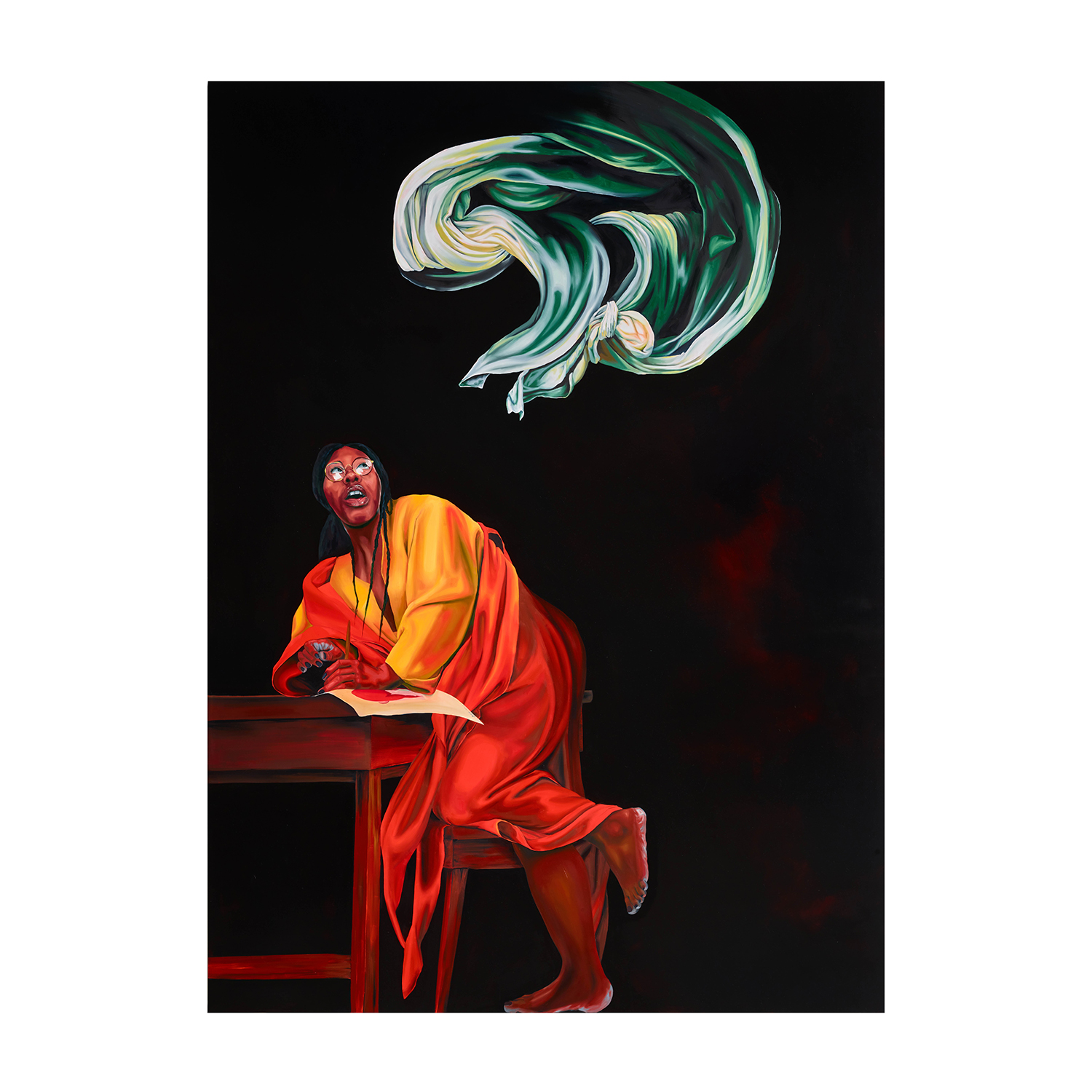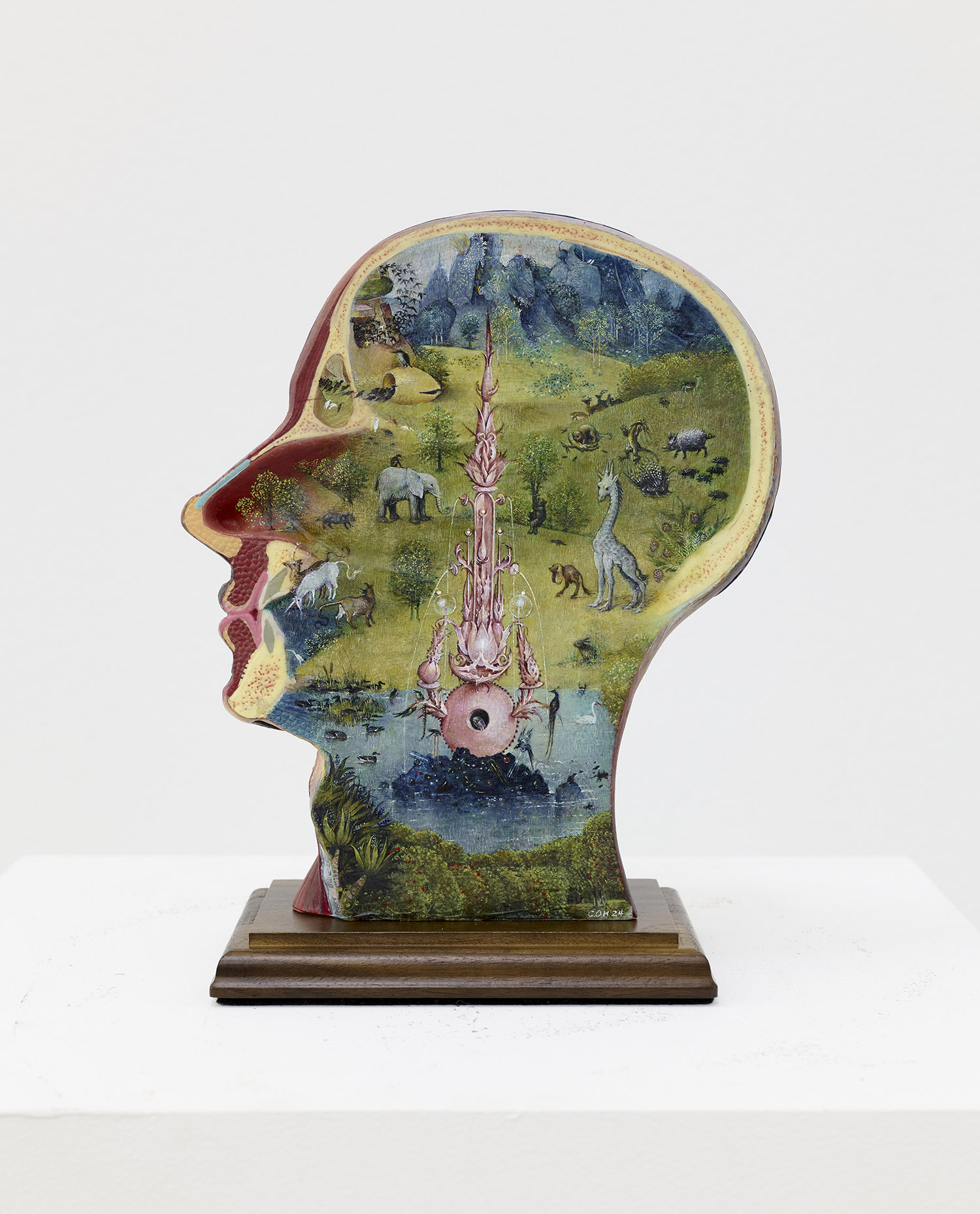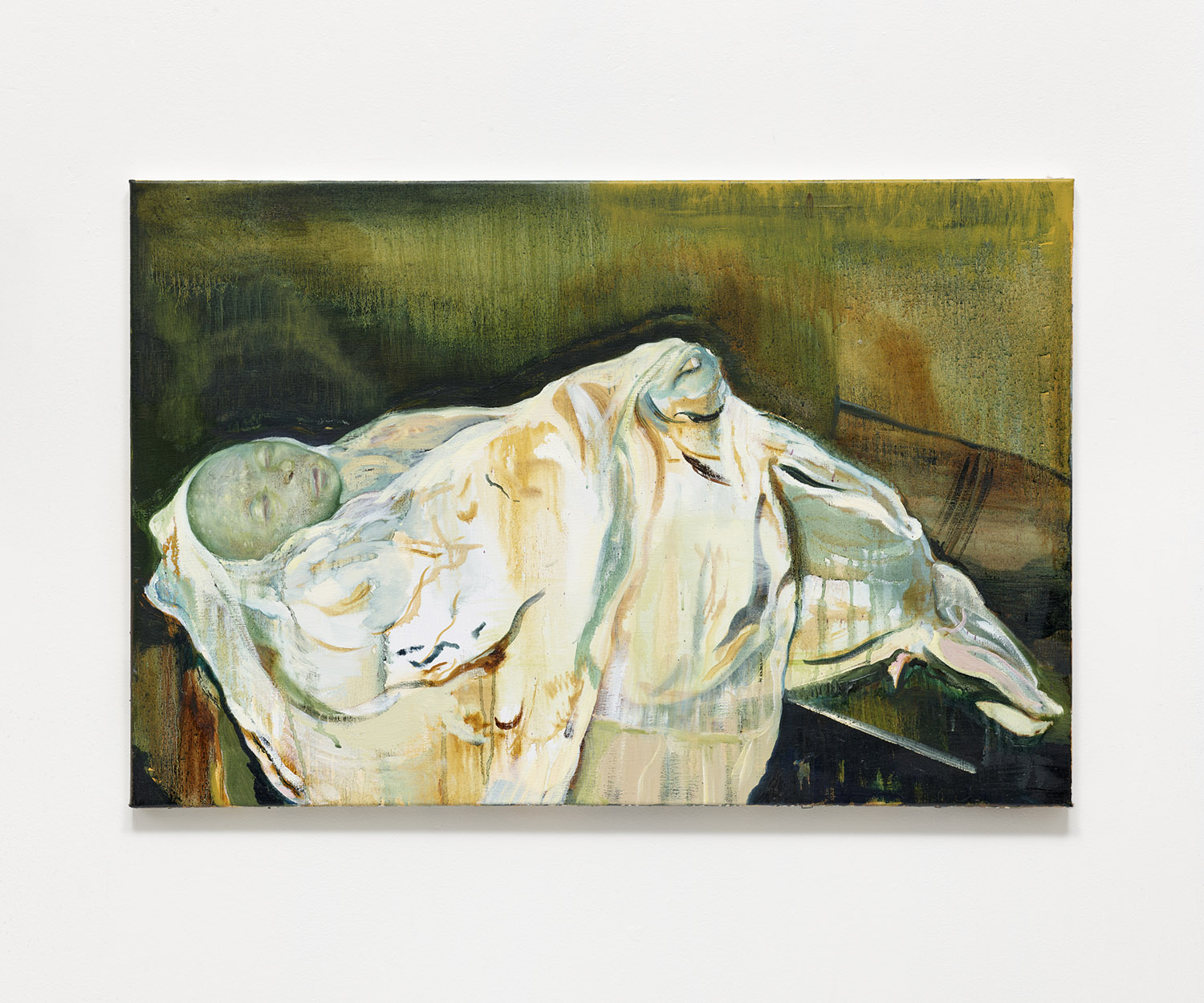
Brittney Leeanne Williams, The Inspiration of St. Matthew (After Caravaggio), 2023, oil on canvas, 88 x 64 inches, 224 x 163 cm.
The Wall Street Journal
‘Contemporary Bodegones’ and ‘Monomythology’ Reviews: Yesterday’s Subjects, Today’s Artists
August 2nd, 2024
By Brian P. Kelly
Exhibitions at Ruiz-Healy Art and The Hole Tribeca show how contemporary artists are inspired by and reinterpret traditional Spanish still lifes, religion and myth.
Artists of all stripes love rummaging through the drawers of history, searching for subject matter on which to put their own contemporary spin. Whether it be the courtly-meets-quirky “Bridgerton,” the budget- and fact-bending “Napoleon” or the ever-expanding library of musical covers, artists have been driven to take up the style and substance of the past to deliver a modern message. Visual artists are no exception, as is evident in a pair of gallery shows currently on view here.

Chris Oh, Fountain, 2024, acrylic on anatomical model with wood base, 11 x 8 x 5 inches, 28 x 22 x 13 cm.
Downtown, at The Hole Tribeca, Monomythology, organized by guest curators Thomas and Tania Asbæk, sees artists tackling the perennial subjects of religion and myth through a 21st-century lens. In The Inspiration of St. Matthew (After Caravaggio) (2023), Brittney Leeanne Williams tweaks the Baroque master’s work, inserting herself as the titular saint and replacing the overhead angel with a swirling bolt of cloth, suggesting that even though society has become more individualized and less dogmatically religious, spirituality still touches artists’ hearts.

Cathrine Raben Davidsen, Pietá, 2024, oil on canvas, 24 x 35 inches, 60 x 90 cm.
Chris Oh re-creates a scene from Bosch’s Garden of Earthly Delights in his Fountain (2024), which eschews traditional painting surfaces for an anatomical model of a human head. Placing a masterpiece containing the spectrum of mankind’s moral experience—from Edenic purity to hellish agony—inside a scientific tool throws the rational and the faith-based into instant, if not irreconcilable, conflict and urges us to ponder larger questions about solipsism, the seat of the soul and the nature of God.
Read the full article here